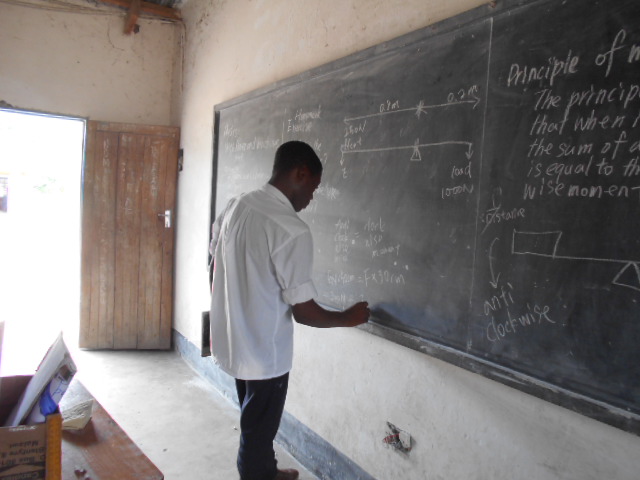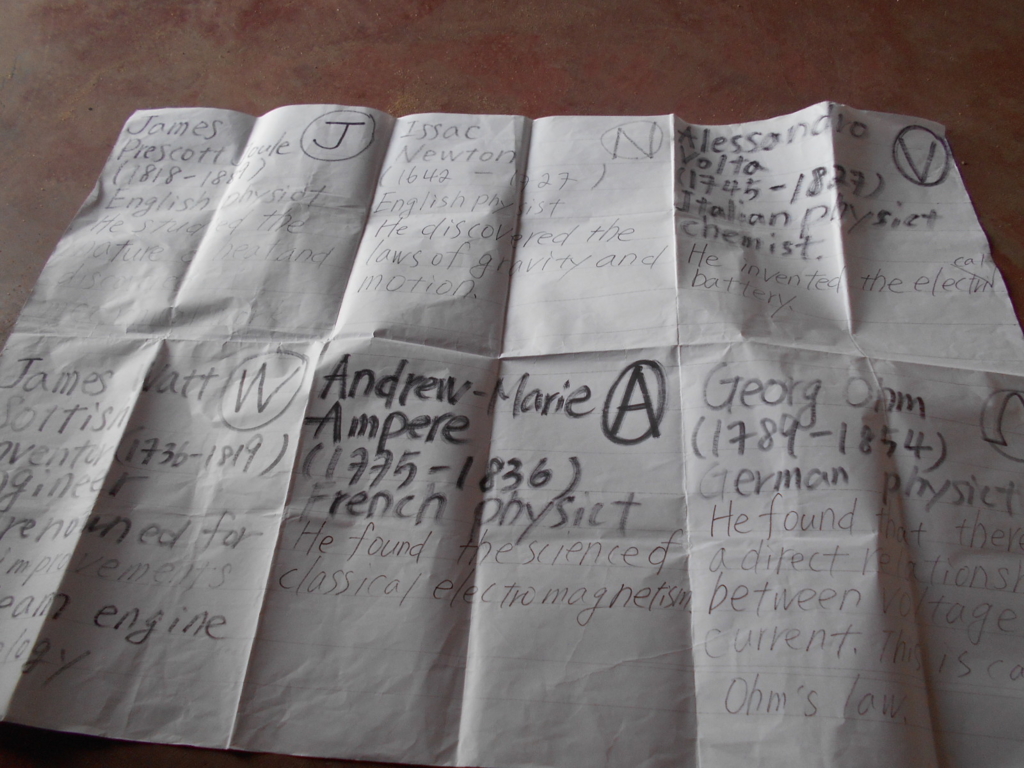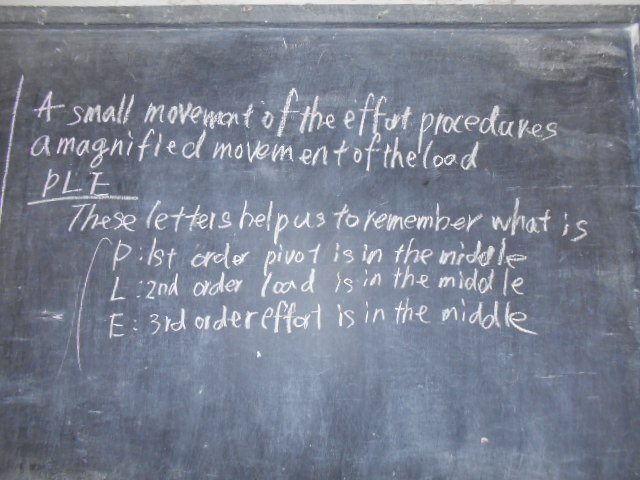Lever(てこの原理)について授業を行いました ~途上国の教育の現場から~
日本の教育では”てこの原理”は小学校で習って、"モーメント"は高校で習います。
しかし、マラウイや他の英語圏の学校ではSecondary でLever (てこの原理)もMoment(モーメント)も同時並行で学習します。
原理はシンプルで理解しやすいかなと思います。
目次
1.Leverってなに?
2.3つのタイプ
3.Moment
1.Leverってなに?
てこの原理のことをいいます。
日常生活の中でたくさんの場面で使われています。

(計算問題を解く生徒)
2.3つのタイプ
こんな感じで3つのタイプに分けることができます。NTC時代にもTechinical classで授業をやりました。

(自分の書いた図)
3.Moment
日本だと小学校から高校にここに一気に飛躍します。
例を使いながら説明すると生徒にとってイメージがつきやすいようです。

(単位は科学者から由来していることを説明)

(Simple machine の説明)

(Lever のタイプを説明)

(Leverからmoment )
授業準備はある程度していかないと、生徒の集中力を継続させるのが難しいかなと感じます。
でも、生徒が理解してくれるとやりがいを感じるのでよかったなと思える瞬間でもあります。
以下英語
A lever is a simple machine that makes work easier to do. Examples of simple levers include cutting with scissors, or lifting the lid on a tin of paint with a screwdriver. Levers reduce the force needed to perform these tasks.
When someone uses a lever, they exert a force (the effort) around a pivot to move an object (the load).
If an extra car is added to the right hand side (see diagram below), then the seesaw will turn in a clockwise direction - called a clockwise moment.
Alternatively,
If more cars are added to the left hand side, the seesaw will turn in an anticlockwise direction - called an anticlockwise moment.